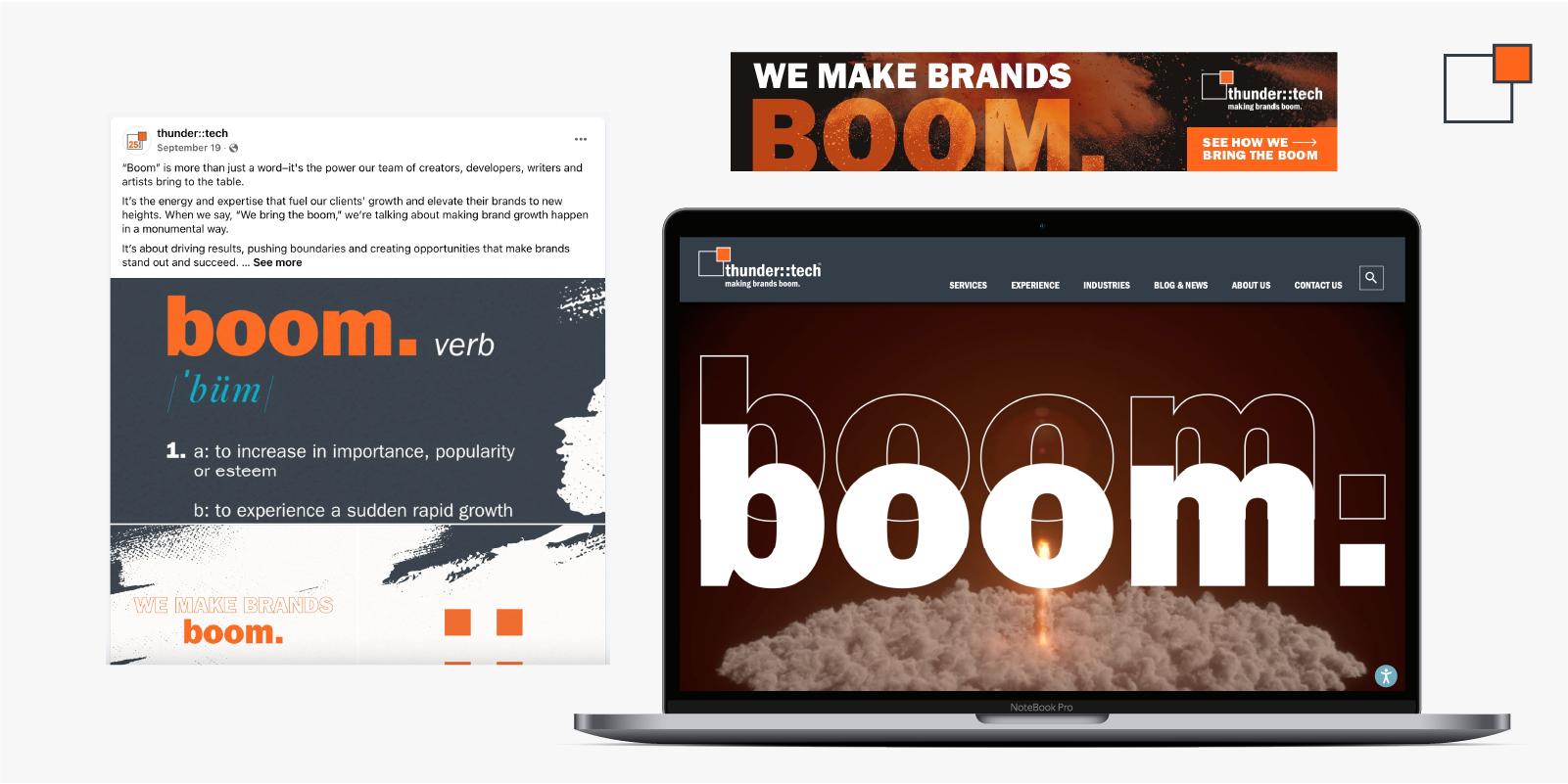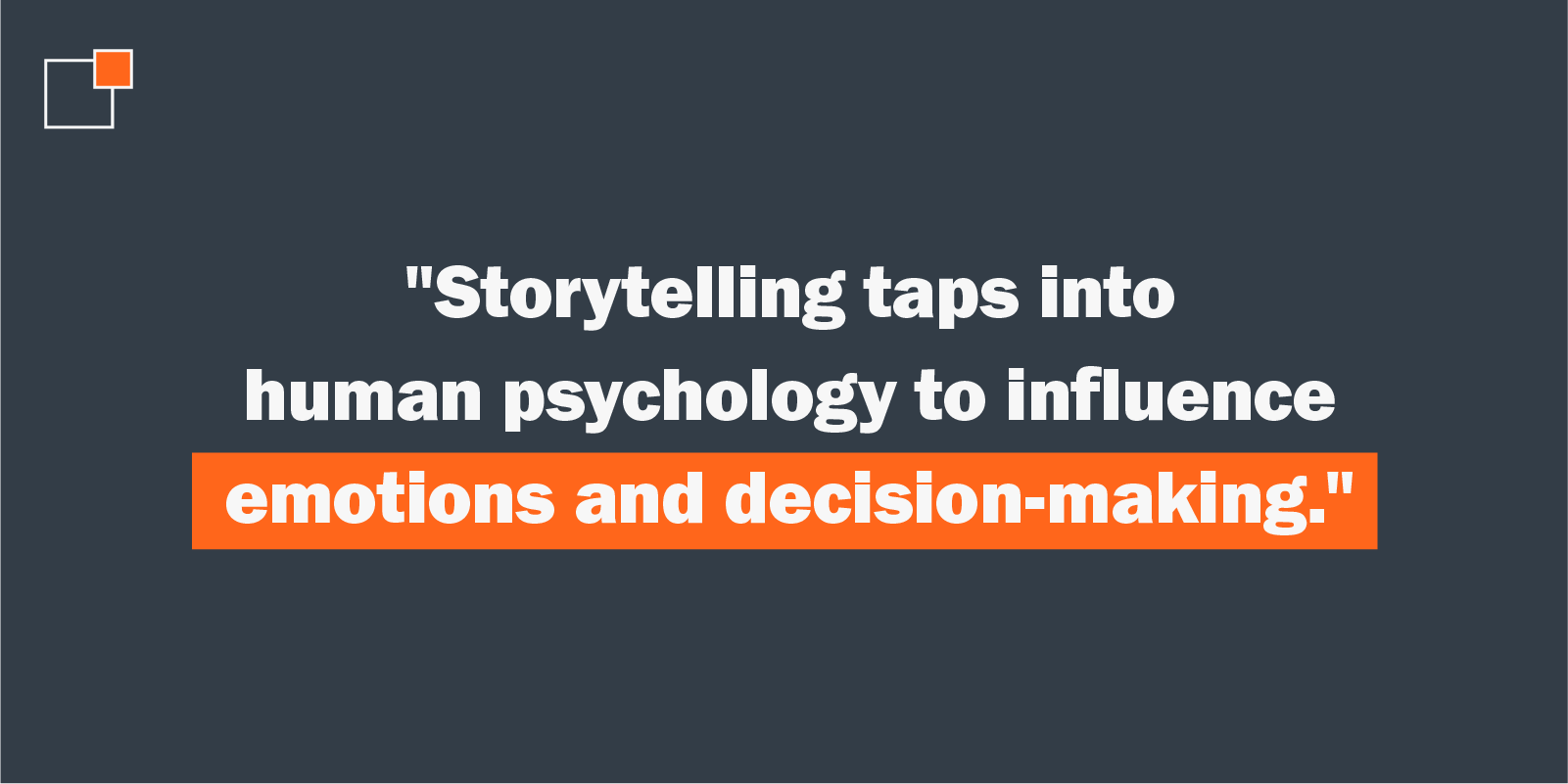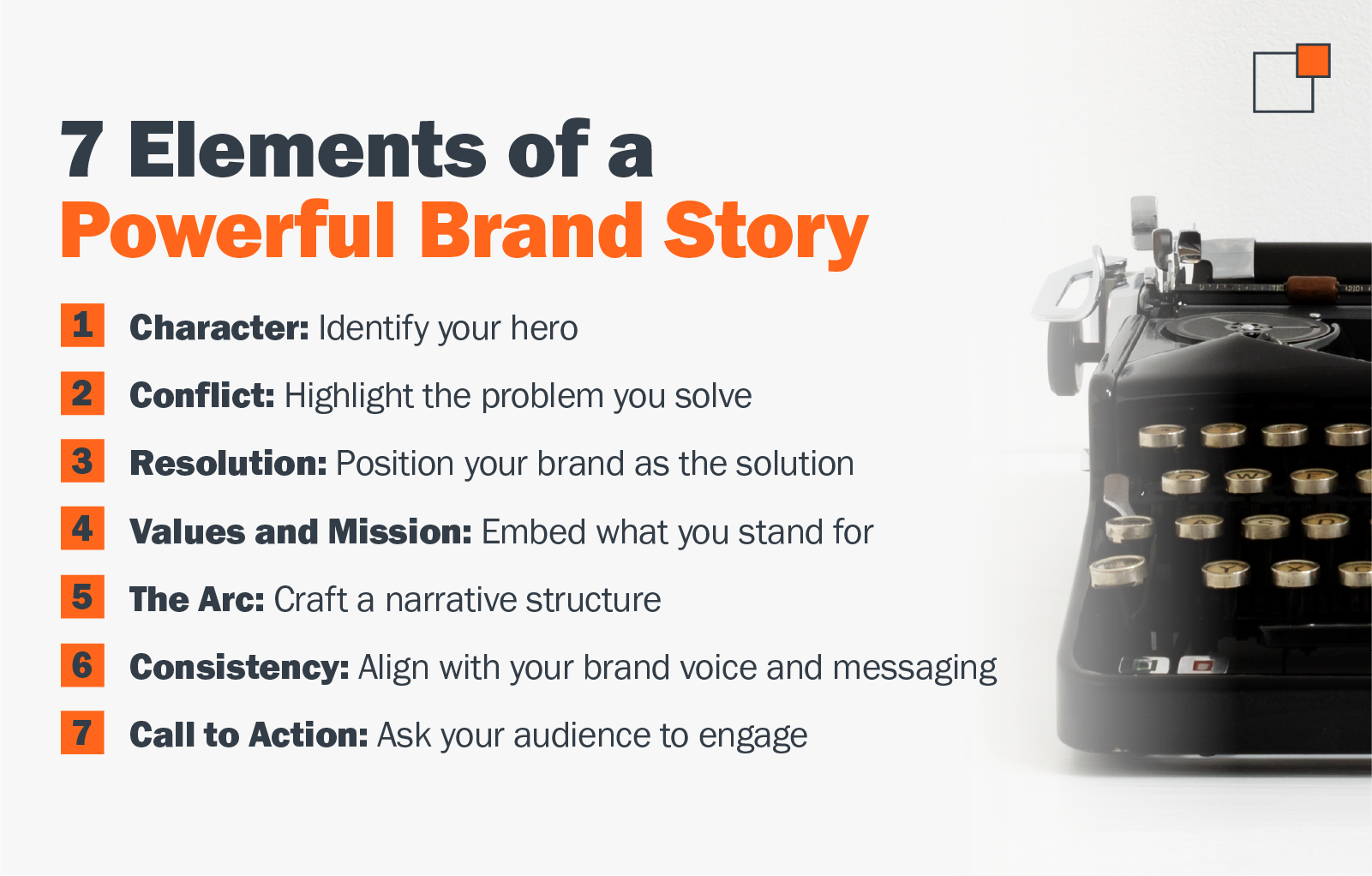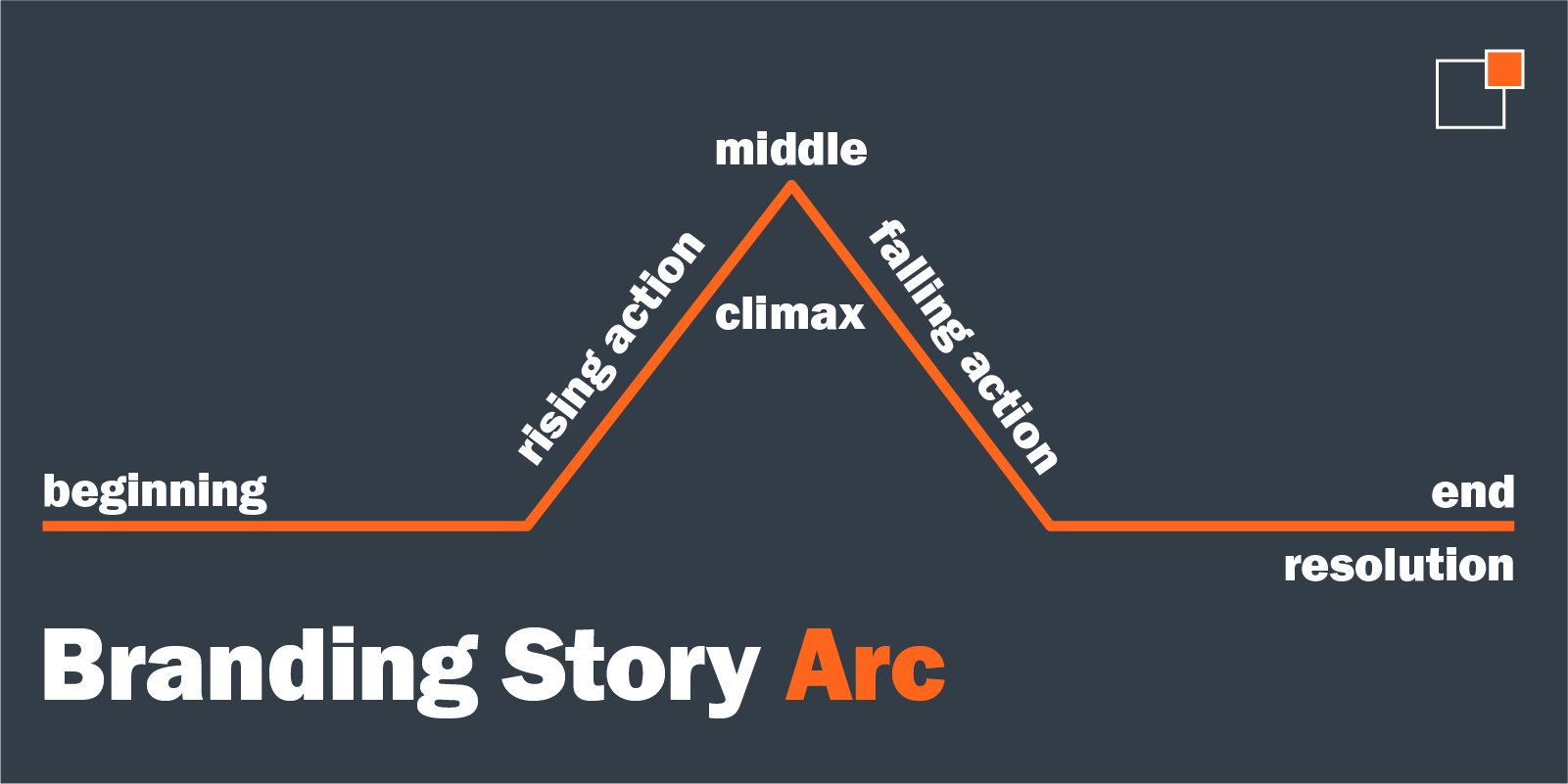The Art of Storytelling
Turning your brand into a story that captivates
Picture this: You’re scrolling through your feed, and you come across a brand. It has nice products and decent pictures, but... not much else. So, you keep going through their page. Instead of pulling you in, their profile feels like you’re engaging with a cardboard cutout. Bland, lifeless and, worst of all, forgettable.

But then you scroll past them and find something magical—a brand that has taken the time to develop a distinct personality and show it off proudly.
Developing and showcasing your brand's personality through storytelling isn't just a nice-to-have—it's essential. Storytelling breathes life into your brand, making it relatable, captivating and memorable. But we’re not telling you to go spin fairy tales; it’s about being authentic. It's what turns casual browsers into loyal fans. It's where real connections are made and where your audience finds a piece of themselves in your narrative.
And just as importantly, your brand story must remain consistent across all your platforms. From your website to social media channels and everything in between, you should be telling one cohesive story.


Now, what about the lessons you do remember? Lessons more commonly taught via storytelling, like a wooden horse winning the Trojan War for the Greeks or how a bill becomes a law (thanks, Schoolhouse Rock), tend to linger.
From childhood, we learn through stories, and this continues into adulthood. Here's how storytelling taps into human psychology to influence emotions and decision-making:
Quite simply, storytelling in branding is more than a strategy; it’s a powerful tool that taps into the core of human nature.


How? Use testimonials, case studies or scenarios emphasizing how your product or service improves their lives. Show, don’t just tell, how your brand makes a difference.
How? Identify the pain points that resonate most with your audience. The key is to frame the conflict in a way that makes your audience care.

How? Showcase success stories, before-and-after scenarios or impactful data that demonstrate the effectiveness of your brand’s solution. Make the resolution clear and compelling so your audience sees the real-world impact of your brand.
How? Integrate your brand values naturally into your story. Don’t just list them—demonstrate them. For example, if sustainability is a core value, weave it into your origin story or show how it drives product development. Your mission should feel like an authentic and active part of your narrative, not just an afterthought.

How? Keep your story structured and easy to follow. Start with an engaging hook that draws your audience in, build tension through conflict and then deliver a satisfying resolution. Use visuals, customer quotes or interactive elements to bring the story to life. Make sure your narrative flow feels natural and that each part of the story serves a purpose.
How? Develop a clear brand voice and stick to it. If you remove your name or logo, can your audience still recognize you?

How? End your story with a clear, compelling call to action. It doesn’t have to be a hard sell; it could be an invitation to join a community, explore more about your brand or leave a comment. Make it feel like a natural continuation of your story.
By focusing on these elements, you’ll craft a brand story that doesn’t just inform—it captivates, connects and compels. It makes your audience feel like they’re living the story with you.
By weaving together relatable characters, genuine conflicts and compelling resolutions, you create narratives that resonate deeply with your audience. Emotions drive decisions, and when you tell a story that makes people feel seen, understood and inspired, you build connections that last.
Most importantly, your brand’s story is more than words—it’s an experience that defines how people perceive you. So, take the time to craft your story with intention, align it with your mission and let your brand’s voice shine through every piece of content you create.
Don’t let your brand blend into the background – tell your story boldly and authentically and watch your brand boom. Need help? Let’s chat about how we can bring your brand’s story to life.

But then you scroll past them and find something magical—a brand that has taken the time to develop a distinct personality and show it off proudly.
Developing and showcasing your brand's personality through storytelling isn't just a nice-to-have—it's essential. Storytelling breathes life into your brand, making it relatable, captivating and memorable. But we’re not telling you to go spin fairy tales; it’s about being authentic. It's what turns casual browsers into loyal fans. It's where real connections are made and where your audience finds a piece of themselves in your narrative.
The essence of storytelling in branding
Now, we don’t want you confusing catchy taglines or flashy ad campaigns as storytelling. Instead, it’s about weaving a narrative encapsulating your brand’s mission, vision and values. It’s the art of communicating who you are, what you stand for and why you do what you do through a compelling and relatable story. Your narrative should resonate with your audience on a deeper level than traditional marketing messages and act as the invisible string tying it all together.And just as importantly, your brand story must remain consistent across all your platforms. From your website to social media channels and everything in between, you should be telling one cohesive story.

Why storytelling matters for brands
The fact is consumers have choices and countless brands bombard people for attention, hoping to catch their eye. But how do you ensure your message is heard in the sea of noise? The answer lies in storytelling, which can help with:- Differentiation: A well-crafted brand story sets you apart by creating a unique voice and perspective that can’t be replicated.
- Engagement: Stories are inherently engaging. They capture attention, foster interest and encourage interaction, leading to higher engagement rates.
- Trust and loyalty: Sharing your brand's journey, values and missions builds trust. Customers are more likely to remain loyal to a brand they feel connected to on a personal level.
- Memorability: You’re way more likely to remember a story than a list of facts. A strong narrative helps keep your brand top of mind.
The psychological impact of stories on emotions and decision-making
Stories are a fundamental part of human experience and are how we make sense of the world and our place in it. Think about it: how many digits of pi or state capitals can you name off the top of your head? Surely you had to memorize a list like this back in elementary school, but that information more than likely drained right out of your head the moment it was no longer needed.
Now, what about the lessons you do remember? Lessons more commonly taught via storytelling, like a wooden horse winning the Trojan War for the Greeks or how a bill becomes a law (thanks, Schoolhouse Rock), tend to linger.
From childhood, we learn through stories, and this continues into adulthood. Here's how storytelling taps into human psychology to influence emotions and decision-making:
- Emotional engagement: Stories evoke emotions. Whether it's joy, sadness, excitement or nostalgia, an emotional response makes the experience more memorable and impactful.
- Empathy and relatability: A good story enables your audience to see themselves in the narrative. It fosters empathy, making them feel understood and connected to your brand.
- Decision-making: Emotion plays a crucial role in decision-making. People often make choices based on how they feel, and a compelling story can guide these feelings toward positive associations with your brand.
- Memory and recall: The brain is wired to remember stories more than plain information. When your brand narrative is compelling, it becomes easier for customers to recall your brand when making purchasing decisions.
Quite simply, storytelling in branding is more than a strategy; it’s a powerful tool that taps into the core of human nature.

7 elements of a powerful brand story
Your brand's story is your chance to captivate and make your audience lean in and listen. It’s where you transform from just another name on the market to a memorable, trusted companion. And by incorporating essential storytelling elements to tell your brand story, you can create a cohesive narrative that captures your audience.
1. Character: Identify your hero
Every story needs a hero, even in branding. Sometimes, the hero is your customer —the individual whose problems your brand helps to solve. Positioning your customers as the protagonist invites them into the narrative, making them feel seen and valued. Alternatively, your brand or product can also play the role of the hero, especially when sharing your origin story, innovations or transformative impacts.How? Use testimonials, case studies or scenarios emphasizing how your product or service improves their lives. Show, don’t just tell, how your brand makes a difference.
2. Conflict: Highlight the problem you solve
Conflict is the heartbeat of any great story. It’s the obstacle or challenge that needs to be overcome, whether it’s the problem your customer faces, an industry issue or a hurdle your brand had to navigate. Conflict adds tension, intrigue and purpose to your narrative—it’s what keeps your audience engaged.How? Identify the pain points that resonate most with your audience. The key is to frame the conflict in a way that makes your audience care.
3. Resolution: Position your brand as the solution
After setting up the conflict, the resolution is where your brand steps in as the problem-solver. This is your moment to shine—where your product, service or brand values swoop in to save the day. But it’s not just about presenting a solution; it’s about showing the transformation taking place as a result.
How? Showcase success stories, before-and-after scenarios or impactful data that demonstrate the effectiveness of your brand’s solution. Make the resolution clear and compelling so your audience sees the real-world impact of your brand.
4. Values and Mission: Embed what you stand for
The most compelling brand stories aren’t just about what you sell but about why you exist. Your core values and mission should be woven into every narrative you tell, guiding your story's tone, direction and heart. This is where your brand’s personality shines through, giving your audience something to believe in beyond the product.How? Integrate your brand values naturally into your story. Don’t just list them—demonstrate them. For example, if sustainability is a core value, weave it into your origin story or show how it drives product development. Your mission should feel like an authentic and active part of your narrative, not just an afterthought.
5. The Arc: Craft a narrative structure
At the core of every story is a structure that guides your audience through the narrative, keeping them engaged and interested—a solid beginning, middle and end. The beginning sets the stage, introducing the hero and the conflict. The middle dives into the struggle and the journey toward resolution. The end delivers the payoff, showing how the issue is resolved and what’s been gained.
How? Keep your story structured and easy to follow. Start with an engaging hook that draws your audience in, build tension through conflict and then deliver a satisfying resolution. Use visuals, customer quotes or interactive elements to bring the story to life. Make sure your narrative flow feels natural and that each part of the story serves a purpose.
6. Consistency: Align with your brand voice and messaging
Consistency in your storytelling builds trust and reinforces your brand identity. Whether through social media, advertising or content marketing, every piece of communication should feel like a chapter in the same book.How? Develop a clear brand voice and stick to it. If you remove your name or logo, can your audience still recognize you?
7. Call to Action: Ask your audience to engage
The best brand stories leave your audience wanting more—and ready to act. A well-crafted call to action turns a passive viewer into an active participant in your brand’s journey. Whether it’s encouraging them to share their own stories, try your product or simply follow your brand, your story should guide the audience toward a clear next step.
How? End your story with a clear, compelling call to action. It doesn’t have to be a hard sell; it could be an invitation to join a community, explore more about your brand or leave a comment. Make it feel like a natural continuation of your story.
By focusing on these elements, you’ll craft a brand story that doesn’t just inform—it captivates, connects and compels. It makes your audience feel like they’re living the story with you.
Crafting stories that connect
A powerful brand story goes beyond product features and benefits; it dives into the why, showing your audience who you are, what you stand for and how you make a difference.By weaving together relatable characters, genuine conflicts and compelling resolutions, you create narratives that resonate deeply with your audience. Emotions drive decisions, and when you tell a story that makes people feel seen, understood and inspired, you build connections that last.
Most importantly, your brand’s story is more than words—it’s an experience that defines how people perceive you. So, take the time to craft your story with intention, align it with your mission and let your brand’s voice shine through every piece of content you create.
Don’t let your brand blend into the background – tell your story boldly and authentically and watch your brand boom. Need help? Let’s chat about how we can bring your brand’s story to life.
About the Author
Lizzie Thornton is a Brand & Content Strategist at thunder::tech. When she's not writing strategic content or crafting brand messaging, she spends her time watching true crime documentaries and saying "hi" to every dog she meets.
